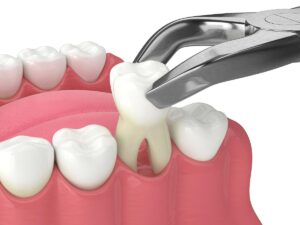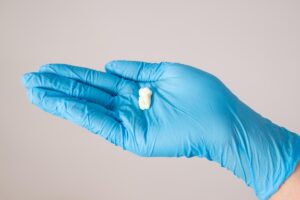Dental extractions, while often seen as daunting, are common procedures that can greatly improve your oral health. Understanding when and why a tooth might need to be removed can help alleviate any concerns you may have. Whether you’re considering oral surgery Yorktown Heights or just looking for more information, explore the various reasons for dental extractions, the symptoms to watch out for, and the process involved to make the best decision for your smile and dental health.
What is a Dental Extraction?
A dental extraction is a procedure where a tooth is removed from its socket in the bone. This can be necessary for various reasons, ranging from tooth decay to overcrowding. There are two main types of extractions: simple and surgical.
- Simple Extraction: This is performed on teeth that are visible in the mouth. In this straightforward procedure, the dentist loosens the tooth with an instrument called an elevator and then removes it with forceps.
- Surgical Extraction: This is a more complex procedure used for teeth that are not easily accessible, such as teeth that have broken off at the gum line or are partially erupted. It requires a small incision into the gum and sometimes the removal of some bone around the tooth.
Understanding these basics can help demystify the extraction process and prepare you for what to expect should you ever need one.
Common Reasons for Dental Extractions
Dental extractions are necessary for a variety of reasons, all aimed at preserving your overall oral health. Here are some of the most common situations where a dental extraction might be the best option:
Tooth Decay
When tooth decay progresses beyond what can be repaired with a filling or crown, extraction might be necessary. Severe decay can damage the tooth structure extensively, making it impossible to save the tooth. Removing the decayed tooth helps prevent the spread of infection to other teeth and the surrounding gums.
Gum Disease
Advanced periodontal disease, or gum disease, can lead to the loosening of teeth. When gums and bone supporting the teeth are severely infected, it might be necessary to remove the affected teeth to stop the disease from spreading and to maintain the health of the remaining teeth and gums.
Overcrowding
In some cases, the mouth doesn’t have enough space to accommodate all the teeth. This overcrowding can lead to misalignment and bite issues. Dental extractions are often performed as part of orthodontic treatments to create space for teeth to align properly.
Impacted Teeth
Impacted teeth, especially wisdom teeth, can cause pain, swelling, and infection. These teeth are unable to emerge properly and can damage adjacent teeth or lead to cysts. Extracting impacted teeth helps to alleviate these issues and prevent further complications.
Tooth Damage
Teeth that are fractured or broken beyond repair may need to be extracted. Whether due to an accident or injury, severe tooth damage that cannot be fixed with restorative treatments often results in the need for extraction to maintain oral health and function.
Recognizing these common reasons can help you understand the importance of dental extractions and why your dentist might recommend this procedure.
Symptoms Indicating the Need for Extraction
Knowing the signs that may indicate the need for a dental extraction can help you seek timely dental care and prevent further complications. Here are some symptoms to watch out for:
Persistent Tooth Pain
Continuous or severe tooth pain is often a sign that something is wrong. This pain might be due to extensive decay, infection, or damage that has reached the tooth’s nerve. When pain persists despite other treatments, an extraction might be necessary to provide relief and prevent further issues.
Swelling and Infection Signs
Swelling in your gums, face, or neck can signal an infection that may require an extraction. Other infection symptoms include fever, tenderness, and pus around the affected tooth. Infections can spread quickly, so it’s crucial to address these symptoms promptly.
Difficulty in Chewing or Biting
If you experience pain or difficulty while chewing or biting, it could be a sign of severe tooth damage or decay. In such cases, an extraction might be the best solution to restore comfort and functionality.
Loose Teeth
Teeth that feel loose can be a symptom of advanced gum disease. When gums and supporting bone structures are severely compromised, extraction may be necessary to prevent further damage to surrounding teeth and tissues.
The Dental Extraction Procedure
Understanding the dental extraction procedure can help ease any anxiety you might have and prepare you for what to expect. Here’s a detailed look at the steps involved in a typical dental extraction:
Pre-Extraction Preparations
Before the extraction, your oral surgery Yorktown Heights dentist will conduct a thorough examination of your mouth. This includes taking X-rays to assess the position of the tooth and its roots, as well as the condition of the surrounding bone. Your dentist will also review your medical history to ensure there are no contraindications to the procedure. You may receive specific instructions to follow before the extraction, such as avoiding certain foods or medications.
The Extraction Process
- Anesthesia Application: To ensure comfort during the procedure, your dentist will administer a local anesthetic to numb the area around the tooth. In some cases, you may receive a sedative or general anesthesia, especially for surgical extractions.
- Simple Extraction: For teeth that are visible and easily accessible, a simple extraction is performed. The dentist will use an elevator to loosen the tooth and then remove it with forceps. This process is relatively quick and straightforward.
- Surgical Extraction: When a tooth is not easily accessible, such as a partially erupted or broken tooth, a surgical extraction is necessary. This involves making a small incision in the gum to expose the tooth. Sometimes, it may be necessary to remove some bone around the tooth or cut the tooth into smaller pieces for easier removal.
Post-Extraction Care
After the extraction, proper care is essential to promote healing and prevent complications. Your dentist will provide detailed instructions, which may include:
- Managing Pain and Swelling: You may be prescribed pain relievers and advised to apply ice packs to reduce swelling. Over-the-counter medications can also help manage discomfort.
- Cleaning and Maintenance: Keeping the extraction site clean is crucial. Gently rinse your mouth with a saltwater solution, and avoid vigorous rinsing or spitting to prevent dislodging the blood clot that forms in the socket.
- Foods and Activities to Avoid: Stick to soft foods and avoid using straws, smoking, or any activity that could disturb the extraction site. Follow your dentist’s recommendations on when to resume normal activities.
Potential Risks and Complications
While dental extractions are generally safe, there are potential risks and complications to be aware of:
- Dry Socket: Dry socket occurs when the blood clot in the socket is dislodged, exposing the bone and nerves. This can cause severe pain and delay healing. To minimize risk, avoid smoking, drinking through a straw, and vigorous mouth rinsing after the extraction.
- Infection: Infections can develop if bacteria enter the extraction site. Symptoms include increased pain, swelling, fever, and a foul taste. Maintain proper oral hygiene and follow aftercare instructions to prevent infection. Contact your dentist if you notice any signs of infection.
- Nerve Injury: Nerve injury, though rare, can occur, especially with lower wisdom teeth extractions. This can cause numbness or tingling in the lower lip, tongue, or chin. These symptoms are often temporary but can sometimes be permanent. Discuss the risks with your dentist beforehand.
- Sinus Complications: For upper molars, there is a small risk of sinus complications due to their proximity to the sinuses. Symptoms might include nasal congestion or a runny nose. Your dentist will provide care instructions if this occurs.
Alternatives to Dental Extractions
While dental extractions are sometimes necessary, there are alternatives that can help save your tooth and maintain your oral health. Here are some common alternatives to consider:
Root Canal Therapy
Root canal therapy can save a severely decayed or infected tooth. During this procedure, the dentist removes the infected pulp, cleans the inside of the tooth, and seals it. This can eliminate pain and infection while preserving the natural tooth structure.
Crowns or Fillings
For teeth with moderate decay or damage, crowns or fillings can be effective solutions. A filling can restore a tooth with minor decay, while a crown can cover and protect a tooth with more extensive damage. These treatments can restore functionality and prevent the need for extraction.
Orthodontic Solutions
In cases of overcrowding, orthodontic treatments such as braces or clear aligners can help realign the teeth without the need for extraction. These solutions create space and improve alignment, addressing the underlying issues that might otherwise necessitate extraction.
Importance of Timely Extractions
Timely dental extractions can play a crucial role in maintaining your overall oral health and preventing more serious issues down the line. Here are some reasons why acting promptly on the need for an extraction is essential:
- Preventing Further Oral Health Issues: Removing a severely decayed or infected tooth stops the spread of infection to adjacent teeth and gums, avoiding more extensive dental work.
- Avoiding Pain and Discomfort: Addressing the problem through extraction alleviates persistent pain and discomfort associated with an unhealthy tooth.
- Promoting Overall Health: Oral infections can contribute to systemic health issues, such as heart disease and diabetes. Timely extraction helps prevent these complications.
- Enhancing Oral Function: Extracting a problematic tooth restores normal chewing and speaking abilities, improving overall comfort and functionality.
Choosing the Right Dental Surgeon for Oral Surgery Yorktown Heights
Selecting the right dental surgeon for oral surgery Yorktown Heights is crucial for a successful extraction and recovery. Look for a dentist or oral surgeon with extensive experience in performing extractions, particularly the type you need. Check for qualifications, certifications, and patient reviews to ensure they have a good track record.
Additionally, consider their communication style and willingness to answer your questions, as a supportive and informative approach can significantly ease your anxiety about the procedure. A reputable dental surgeon in Yorktown Heights will provide clear guidance on pre- and post-extraction care, helping to ensure a smooth and complication-free experience.
Book an Appointment with Dr. Greenberg
If you are looking for oral surgery Yorktown Heights, trust Dr. Andrew Greenberg, an experienced oral surgeon in Westchester County, NY. Specializing in dental implants, teeth extraction, bone grafting, and biopsies, Dr. Greenberg provides expert care tailored to your needs. Schedule an appointment and visit our in Briarcliff Manor office today to experience top-quality oral and maxillofacial surgery.


